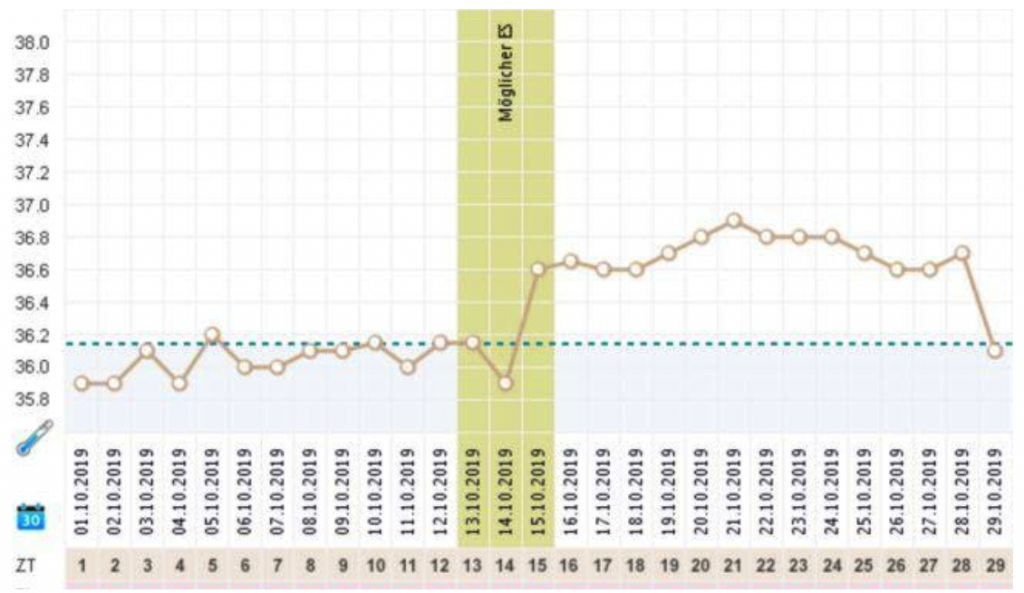KickAss Squad
The female menstrual cycle and what information it gives us
Fia • 31. March 2021 • 6 Min.
As I reported in my last blog, I have been training at KickAssSports since October 2020 and since the first day onwards my training plan has been tailored to my cycle. But what exactly does that mean and why did I decide to change my training? What has changed and what does my training plan look like now? I will address these questions today and over the next few weeks. At this point I would like to point out that I am not a doctor or a scientist. In this blog I only report about my personal experiences with this topic.
What do I hope for from cycle-based training?
- Relieve discomfort / pain before or during your period
- Get to know and understand your own body better
- Get a regular cycle
- Live healthier, more energy, better mood
- Train with and not against your own body
- performance increase
Many of you are probably familiar with: abdominal pain, headache, bad mood, reluctance, water retention. I also struggled with these so-called PMS symptoms for a long time, every month was a different kind of pain. After I stopped the pill for various reasons, the effects became more and more severe, my cycle was irregular and sometimes stopped completely.
In short: something had to change.
The last impulse I got and that showed me that I needed to change something was when I saw Laura’s YouTube series. Laura is a mentor and founder of KickassSports. If you haven’t seen her videos yet, make sure to check them out for more insights. They were life changing for me.

© Viktoria Engler
Phases of the cycle in Summary
First, I would like to briefly explain the menstrual cycle to you: The female cycle normally lasts 28-35 days and can be divided into two halves. The first half of the cycle begins on the first day of your period and ends with ovulation. This phase is called the follicular phase and is dominated by the hormone estrogen. Ovulation marks the transition to the second half of the cycle, also known as the corpus luteum phase, and ends before the period starts again. During this time, the hormone progesterone is predominantly represented. I will address all phases more thoroughly in the next few blog posts.
As soon as you have decided to train on the basis of your cycle, you or/and your trainer will need the following information:
- Do you have a natural cycle (no hormonal contraceptives in use)?
- Only then does it make sense, in my opinion, to coordinate the training with the cycle
- In which phase are you (follicular phase or corpus luteum phase)?
- Are you ovulating and if so, when?
- Do you have a menstrual period and if so, from when to when?
To record it more precisely, it is necessary to record some parameters. When I discussed the subject of tracking with my friends, everyone immediately thought of apps with a pink background with various smileys that are supposed to describe the well-being during the cycle. But there are other, more objective data alternatives as well. I myself use the temperature and the cervical mucus method.
The temperature method or: The thermometer greets you every day
I take my basal body temperature with a digital thermometer every morning before I get up. For an accurate measurement, measurements should always be made at the same point (oral, vaginal or rectal) and for about 3 minutes. I then immediately enter the measured temperature in the Azum training platform. I know that sounds a bit daunting and annoying at first, but as soon as you have integrated the measurement into the morning routine, it is really super fast and uncomplicated.
During the first half of the cycle, the temperature is uniformly low and increases sharply towards ovulation (approx. 0.3-0.5 degrees). The basal temperature then remains at this level for about 3 days in a row and then increases a little again until it drops again at the onset of your period. Can you also record such a temperature curve?

Cervical mucus
The cervical mucus can also be documented. After the menstrual period, women excrete a milky, creamy or lumpy cervical mucus. Towards ovulation, the discharge becomes more and more glassy, fluid, clear and spinnable. You can then easily pull it apart 3-4 cm between your fingers. The amount also increases. After ovulation, the mucus becomes less and milky, creamy, or lumpy.
Thanks to these two methods, one can say with great certainty whether ovulation has occurred.
Play it safe with LH tests
But if you want to know exactly, you can also do an LH test.
At ovulation, the proportion of the luteinizing hormone LH increases and makes the egg jump. LH can be detected in the urine approximately 24-36 hours before ovulation. If the LH value is increased, the ovulation test is positive and confirms that ovulation is imminent. With an average cycle length of 28 days, you should start testing between the eighth and tenth day of your cycle.
I tried this test a couple of times because I wasn’t sure whether the temperature rise was “significant” enough and I actually ovulated. These tests work in a similar way to a pregnancy test, are inexpensive and help you to get a better feeling for your own cycle. You can either order them online or buy them in a well-stocked drugstore. It is important to note that there are different sensitivities of LH tests. It is best to start with a medium sensitivity (20 or 25 mlU / ml) and if the test is negative, try a higher sensitivity (e.g. 10 mlU / ml) next time, because the level of the LH value varies from woman to woman .
It can therefore be that women have a relatively low LH value of less than 20 mlU / ml despite impending ovulation. In such cases, a test with 20 mlU / ml would not work and a higher sensitivity would have to be used.
These three methods will give you a pretty good idea of your cycle. It can also be helpful to track sleep, moods, ailments and diet. After a few months of recording I was able to discover some connections. It’s really exciting and it’s great fun to get to know your own body better.
Last but not least, I share all of this information with my KickAss coaches so that they know about my hormonal situation and can plan my training accordingly.
The big advantage of tracking is that I can see whether I have a functioning cycle and can check every month whether I am healthy. Of course, it is not so easy to talk to your coach about such a personal topic at first, but I have learned that it only takes some effort at the beginning and the more openly and often you talk about it, the easier it becomes.
What do you need for proper cycle tracking?
- Thermometer (exactly to two places after the decimal point, if you want it fancy: there is also a timer function and bluetooth)
- Don’t be afraid to touch the cervical mucus
- Possibly LH tests (note sensitivity)
- Eventually tracking app or training apps like Azum or Garmin etc. (but also works oldschool with a notebook)
- A way to share this information with your coach (shared calendar, training app, etc.).
What does cycle-based training look like?
To make it simple, my training consists of two phases. A phase with many intensive, very hard training units and a phase with primarily loose basic units or technical training. The intensive training phase takes place during the first half of the cycle, the extensive training phase in the second half of the cycle. But more on that in the next blog!


